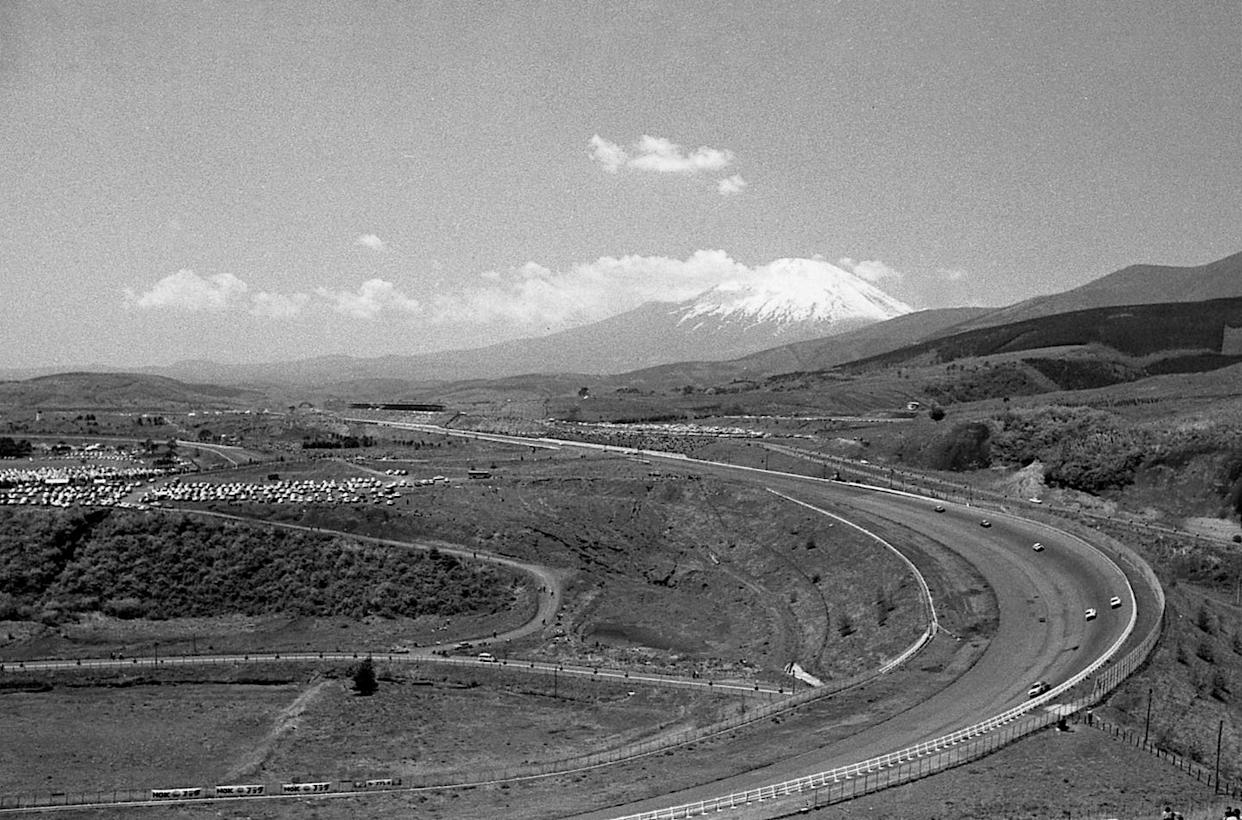
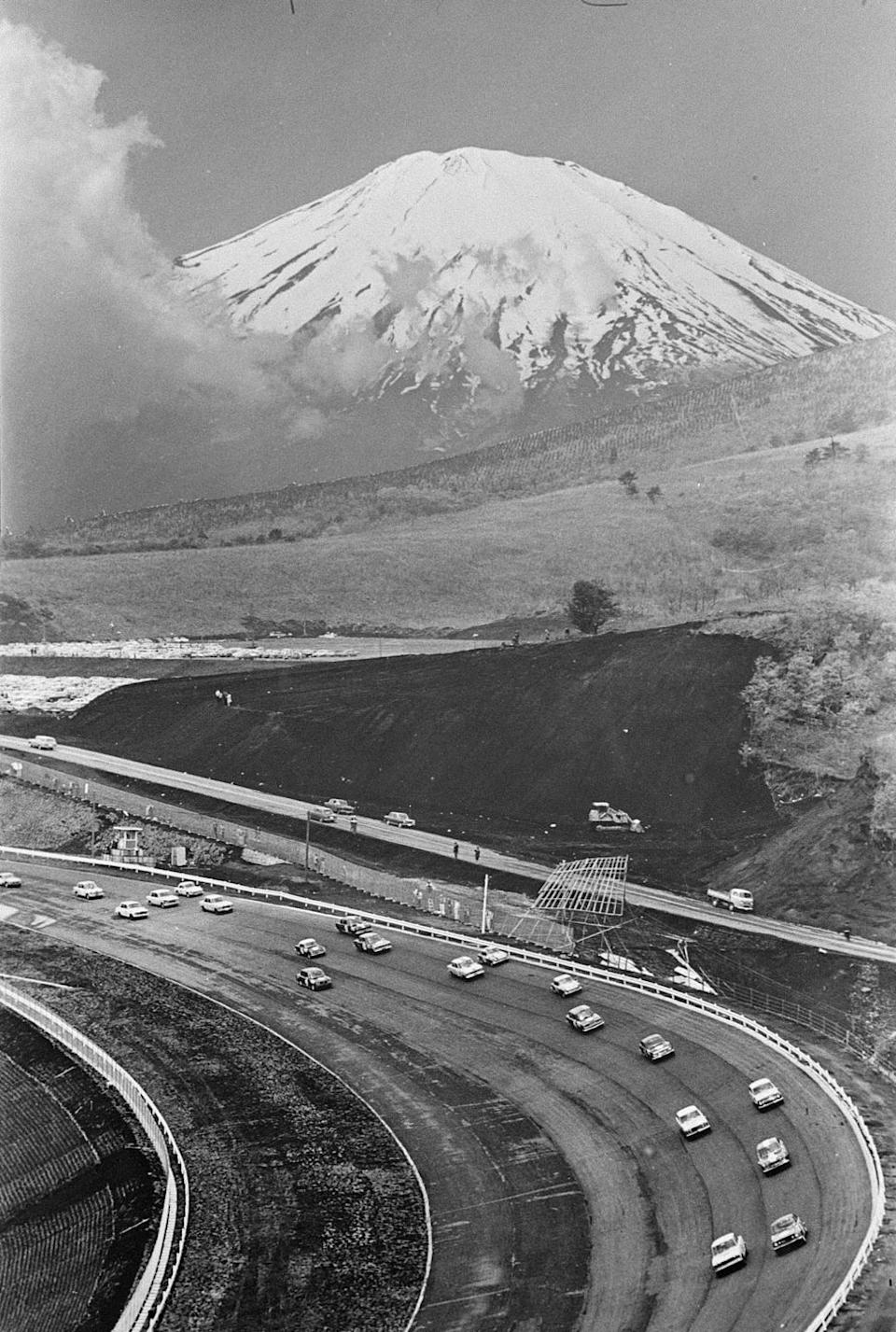
Mount Fuji, Japan’s iconically conical mountain peak, looms in serene beauty over a motor-racing facility that bears the same name but has always struggled to match the stratovolcano’s symmetrical perfection.
This story originally appeared in Volume 30 of Road & Track.
Conceived in 1963 as a Daytona-style NASCAR tri-oval superspeedway (yes, really), Fuji Speedway opened in 1966 as a road circuit with only one high-banked turn. Dubbed Daiichi, which translates to “number one” or “big one,” this long, fast, sharply downhill arc proved so hazardous that numerous early fatalities nearly forced the whole track to close.
Oblivion was averted by reengineering the circuit as a pure road course not once but multiple times. Fuji Speedway went on to host a USAC Indy-car event, two appearances by Can-Am cars, and four FIA Formula 1 grands prix—the first, in 1976, being so dramatic that it featured in a movie, Rush. The place survives today as one of Japan’s premier racing venues.
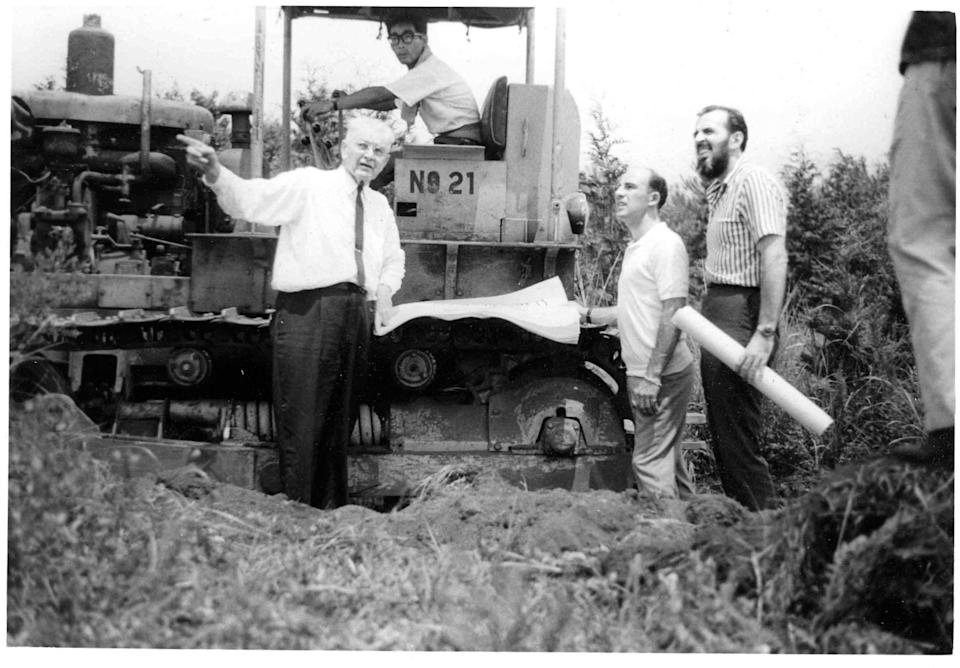
How did all of this happen? Initially through the ambitions of several local organizations invested in building their nation’s auto industry, as well as its tourism. Joining them were two entrepreneurial Americans already involved in racing, along with a retired British F1 driver named Stirling Moss and Bill France Sr. (a.k.a. “Big Bill”) of NASCAR, who approved a deal in 1963 to start the Japan NASCAR Company. (Again, it’s true.)
As in many industrializing nations in the early 20th century, Japan’s first venture into automaking, 1907’s Takuri car, helped spark enthusiasm for auto racing. Typically, early races had to be held on makeshift, temporary courses. It wasn’t until 1936 that racers received their first purpose-built track in Japan. Tamagawa Speedway on the outskirts of Tokyo was a three-quarter-mile, asphalt-paved oval replete with good spectator seating, and it quickly became popular.
Perhaps Tamagawa’s most historically important event was its first. That’s when a young mechanic and engineer named Soichiro Honda survived a crash that sent him leaping from his rolling self-built open-cockpit car. Thus was preserved a storyline that led through the manufacture of successful piston rings, the development of a global motorcycle and automobile corporation, and 1962’s opening of the Suzuka racing circuit, today’s home of the Japanese Grand Prix.
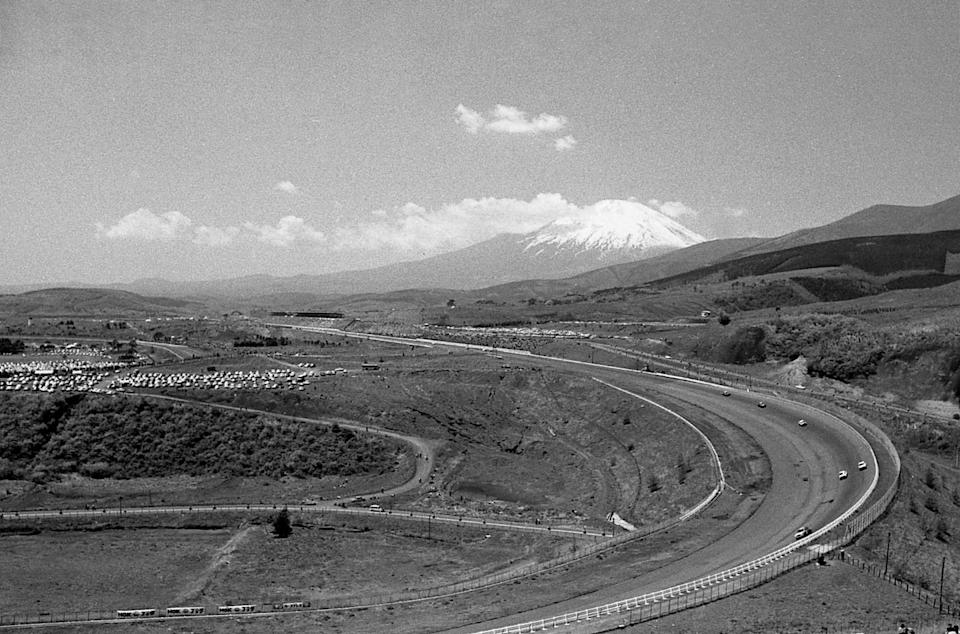
The following year, the Fuji project began. Clearly, there was no idea of duplicating Honda’s Suzuka, a road course located on reasonably even terrain near a modest industrial city some 250 miles southwest of gigantic Tokyo, built when the local manufacturer was still mainly producing motorcycles. Planners of Fuji had an entirely different business model.
First, they chose a hilly, rural site much closer to the capital in a favorite tourist area. The project’s backers included a manufacturer of rail cars, who already had two lines bringing the masses to Mount Fuji from Tokyo. The government had just opened a portion of a new express highway, which would appeal to the ever-increasing number of car-owning race fans. Hotels and other amenities were already in place, serving visitors to both the legendary mountain and the nearby seaside.
As for the speedway itself, a focus on big, loud, crowd-pleasing stock cars was modeled on Daytona.
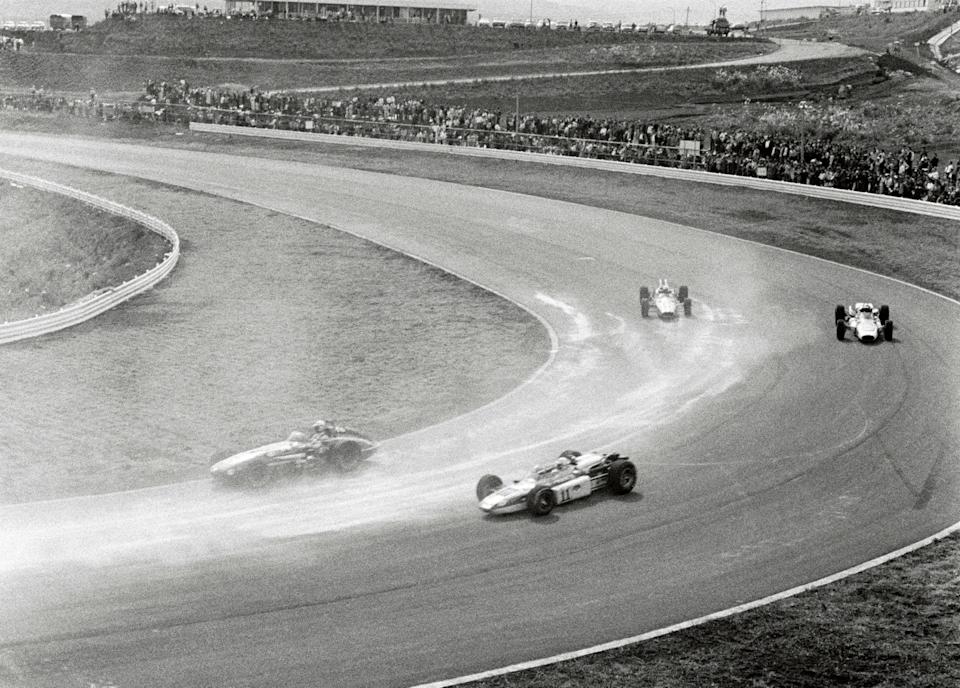
Ah, but how to design all of this? Builders in Japan had no experience with such a facility. Luckily, one of the Americans knew where to turn.
This Yank was Don Nichols, the U.S. Army veteran known to us now for his Shadow racing team. Back in the postwar years, the Missouri-born Nichols had been stationed in Japan as a counterintelligence officer. He became fluent in the language and met a lot of influential people. Upon retirement, he stayed on in the rapidly recovering nation, where he built a lucrative business in helping the nascent auto-racing industry connect with international suppliers.
As told to this writer for the 2020 book Shadow: The Magnificent Machines of a Man of Mystery, Nichols said, “During the Sixties I was going around the world to Grand Prix races, many of them, and buying up all the Goodyear tires that weren’t used in the Grand Prix and bringing them back and selling them to the Japanese auto and tire makers. They had no access to competition tires and they were interested in the technology. Such things were totally unavailable in Japan at that time.”
Expanding his imported race-tire enterprise into shocks and suspension parts and other such equipment, and sometimes entire race cars, the imposingly tall, bearded, and well-spoken Nichols became well known in the local competition community. He even did a little racing himself. Inevitably, he got involved in the speedway project.
“I was actually a member of the Fuji Speedway Corporation for a while,” Nichols said. “Japan was at that time educating and upgrading their business staffing and procedures with Western business technology. So I could open doors and bring them top-level people and help them progress.”
His friends at the big Japanese corporations aimed to partner with the biggest players, he added. “They liked to have the prestige of international consultants,” he said, “so it took away any question as to whether they should be respected. So it was my role to bring the authenticity and foreign technology and sporting custom and that sort of thing.” Also, “I set up the office, and got all the publicity going.”
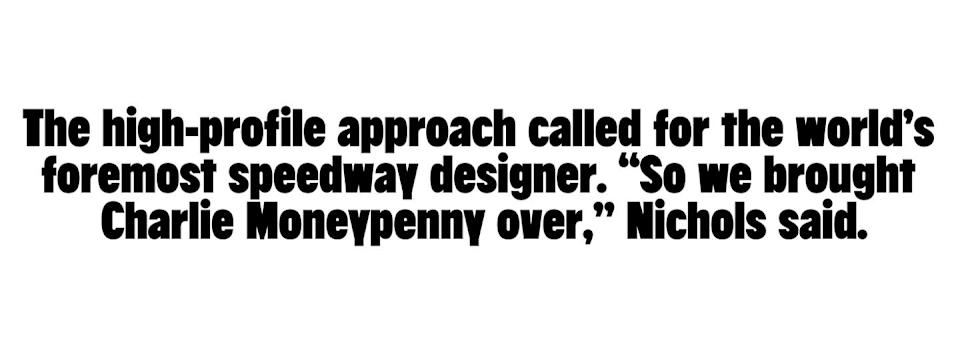
Charlie who? His name isn’t widely known in racing history, but this was none other than the man who designed and supervised construction of Daytona’s sprawling tri-oval for Big Bill France.
Moneypenny was a Michigan native who served in the Army Corps of Engineers, then settled in Florida as a civil engineer for the city of Daytona Beach. His retirement in the late Fifties dovetailed nicely with France’s vision, and Moneypenny set about learning how to build a steeply banked speedway.
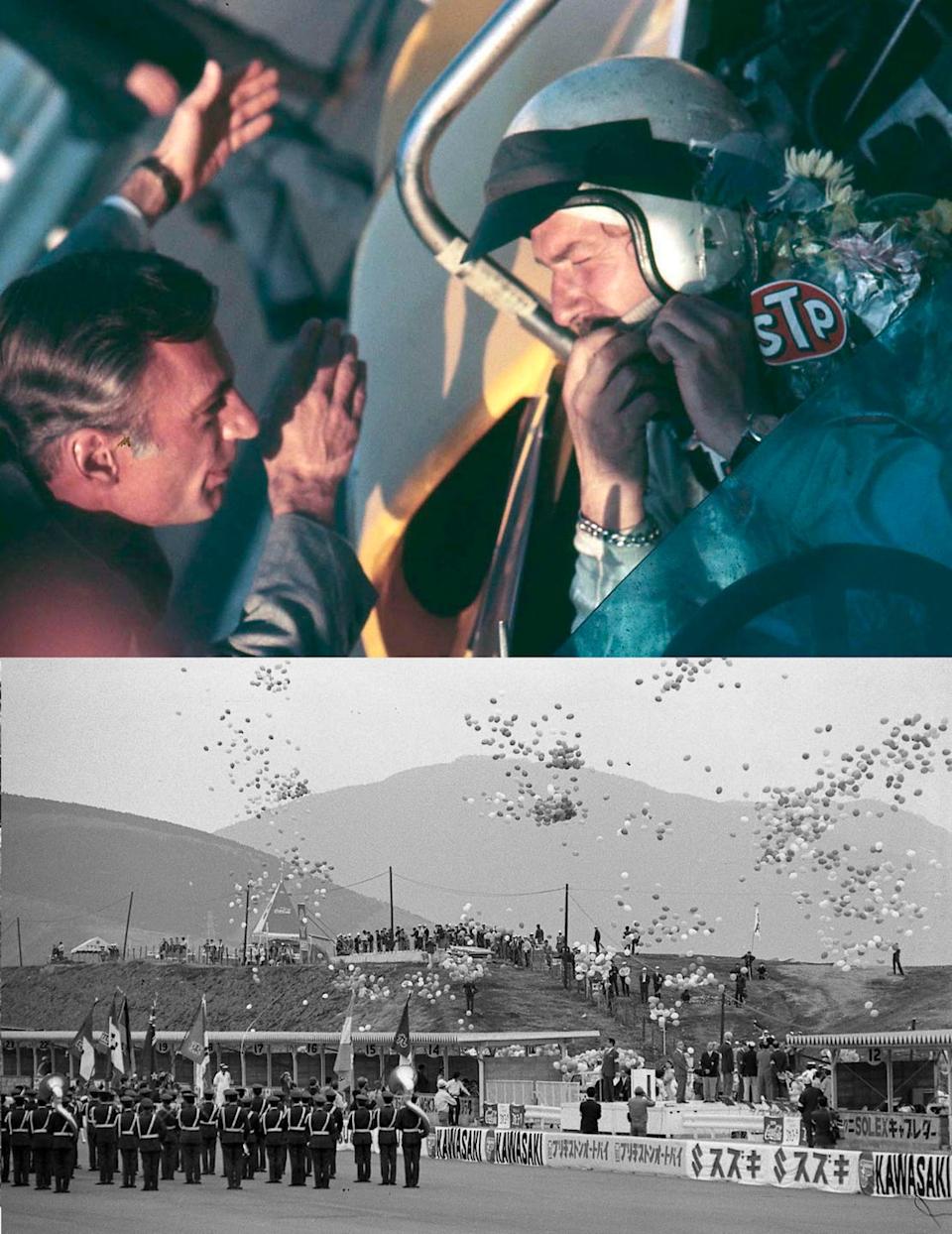
This was no new concept, of course. The U.S. had its era of wall-like board tracks, while the paved, high-banked Brooklands circuit opened in England in 1907. Similar autodromos soon sprang to life in France, Italy, and Spain. But when Moneypenny sought to study the challenge personally, he had only to visit GM’s and Ford’s proving grounds near Detroit. There he not only got to try standing on sharply tilted lengths of roadway, but fellow engineers also shared invaluable information about building such structures.
“When I began research on this track back in 1953,” he later told the Daytona Beach News-Journal, “the first thing I learned was that most tracks are laid out strictly by guesswork.”
The city engineer went on to work out his own mathematical formulas for correct contours, radii, and transitions between racetrack bankings and straightaways. After Daytona proved successful, he designed NASCAR’s high-banked speedways at Talladega and Michigan International.
This was the accomplished gentleman Nichols escorted to both men’s first view of the site where the Fuji Speedway Corporation intended to build Japan’s version of Daytona. About an hour and a half southwest of central Tokyo, it was a large plot of vacant land in a renowned tourist area. Race spectators would have a grand view of the 12,388-foot, often snow-clad vision whose base lay roughly a dozen miles to the west.
Nichols chuckled. “At that stage, I hadn’t really been to the site and looked at the land,” he remembered. “They said it was an ideal location that they had bought, just above a famous resort, the biggest seaside resort in Japan. Charlie showed up; he already had a plan laid out.... He looked at the land, and he looked at me, and he started laughing. ‘You’re gonna build a superspeedway here? Ha ha ha.’”
Banked-oval speedways need level ground. The Fuji site was on a rugged hillside that sloped sharply to the south. Clearly, much rethinking and recalculating had to be done. Maybe the oval-track idea itself should be abandoned in favor of a natural-terrain road course.
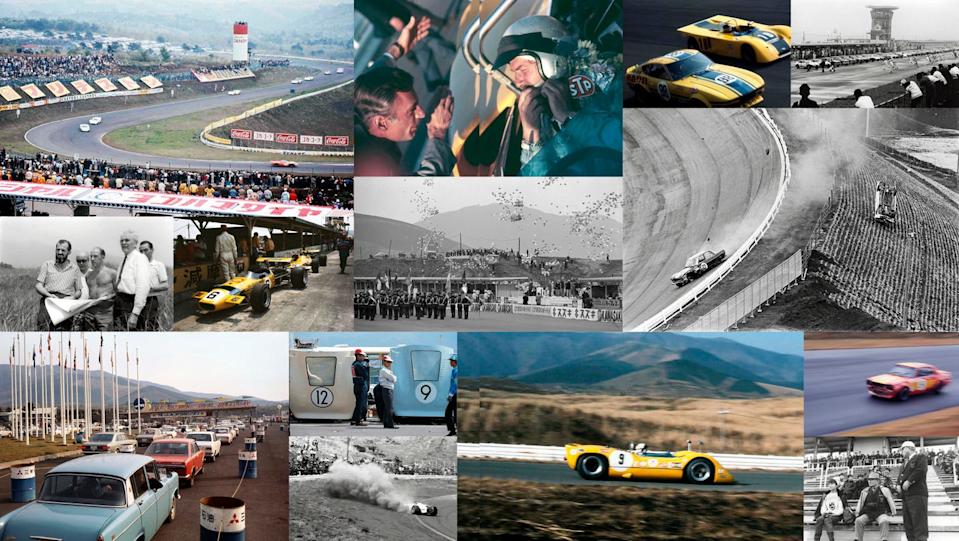
“Charlie said, ‘Can you get a consultant to help?’” Nichols recalled. “I said, ‘Yeah, I know a guy that’s perfect for a consultant.’ Stirling Moss had just had his accident [at Goodwood in 1962, the end of his great driving career]. I hired Stirling to come over. He was like a god to them. He was with us during the day, trampling around in the tall grass, giving his opinions about how a race track should be done, and then hurrying back to Tokyo for the night life.”
Construction began in June 1964. Of the originally planned tri-oval, only the long Turn 1 was built. Its bank angle was 30 degrees, one less than Daytona’s, but everything else about it was much hairier.
Fuji’s pits and main grandstands were along a straightaway running southwest to northeast on the north side of the property. Turn 1 at the northeast end of the straight was a downhill right-hander. When drivers entered the banking, instead of the road rising up under them, it dropped precipitously, making fast cars go light just when they ought to feel planted.
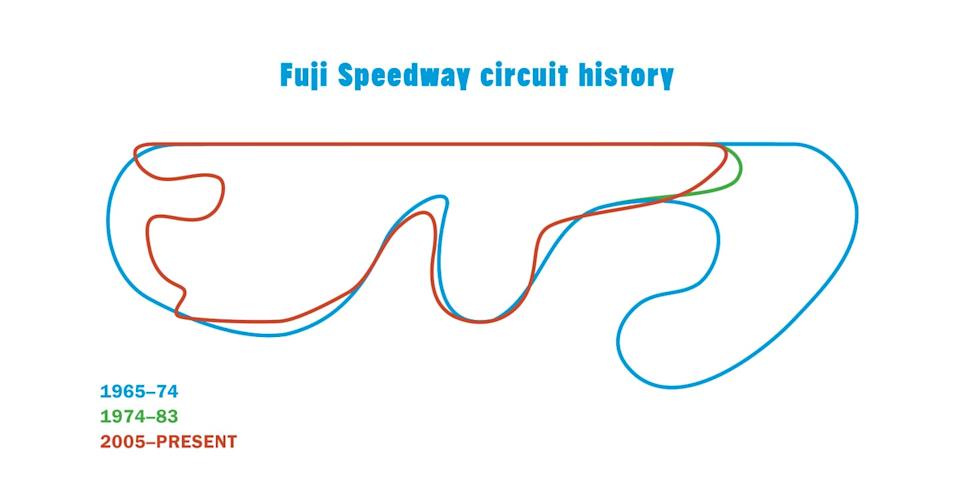
Odds are that cars would have been gathering speed all the way down. When they arrived at the tri-oval’s planned Turn 2, near the East Gate on the southern side of the property, they would have dropped roughly 400 feet in elevation. They might have been going faster than when they passed the pits. It’s hard to think that Moneypenny, the mathematically minded engineer of successful superspeedways, played any part in constructing something so dangerously divergent from what he’d done before.
In any case, neither Turn 2 nor Turn 3 was ever built. Histories say the money ran out due to higher-than-anticipated expenses. That’s probably true, but one wonders whether the change in plans had anything to do with the fact that Big Bill lost interest.
The engineer likely reported to his boss that the site was not suitable for a banked superspeedway and that the track would be finished as a road course only. He might also have found that the mountainous area’s frequently rainy weather argued against an oval anyway.
Road racing was not really NASCAR’s thing. The Japan-NASCAR enterprise was dissolved, the project was renamed Fuji International Speedway Corporation, and new backers came aboard to finish the remaining construction.
Completed in late 1965, the road-racing circuit measured 3.7 miles around. It was more open, faster, and less twisty than the Florida venue that inspired it. Fuji boasted an impressive front straightaway just under a mile long, plus eight turns or more, depending on how one counts turns, including the section of 30-degree speedway-style banking at the northeastern end of the straight.
The track could be run in either direction. Drivers racing clockwise appear to have been more at risk in the Daiichi downhill. Going counterclockwise tamed that turn. That was the choice of USAC when, with NASCAR out of the picture, Nichols approached the Indy-car sanctioning body’s Henry Banks. Most of that year’s Indy 500 field came over for a 214-mile non-championship run.
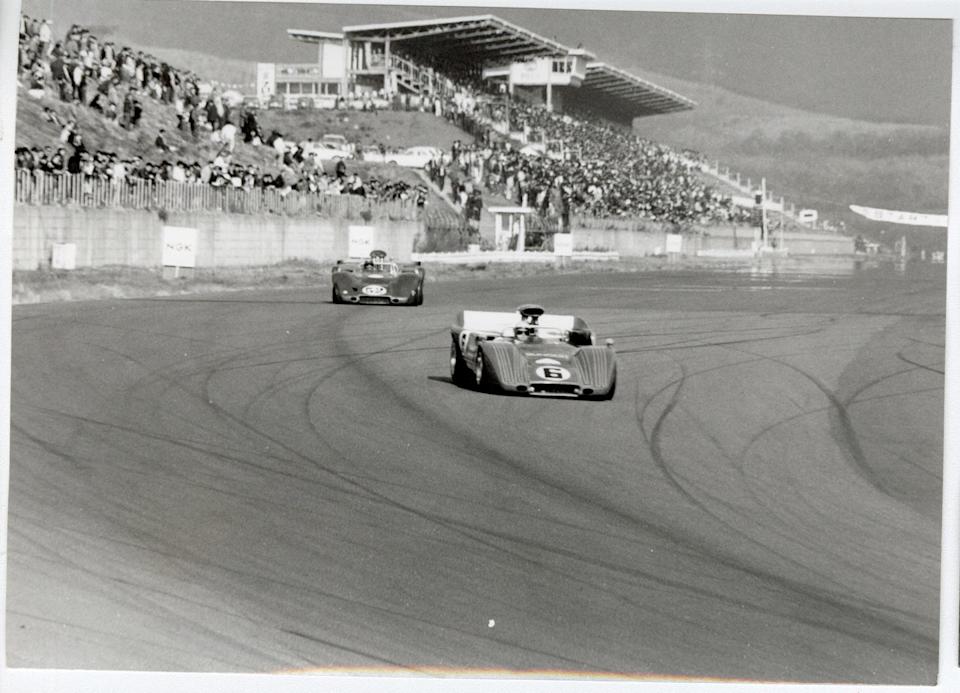
The race was on October 9, 1966, less than a year after construction was completed. Jackie Stewart won, driving the same Lola-Ford that almost took him to victory in Indiana that year. This time his teammate, Graham Hill, failed to win after leading. Second home, on the same lap as Stewart, was Bobby Unser driving an Eagle-Ford. Mario Andretti had qualified, but his engine blew before the race.
In fact, attrition was very high. This was only the third-ever Indy-car road race, and Fuji’s right-hand corners starved a lot of left-turn-only engines of oil. USAC did not return.
Two years later, in November 1968, the World Challenge Cup Fuji 200 also ran counterclockwise. It was not part of the North American championship, but a contingent of Can-Am regulars came to race drivers from Japan in homegrown Toyotas built to the same minimal regulations. Mark Donohue’s McLaren-Chevy started from pole, but Peter Revson came home first in a Ford-powered McLaren, ahead of Sam Posey’s Lola.
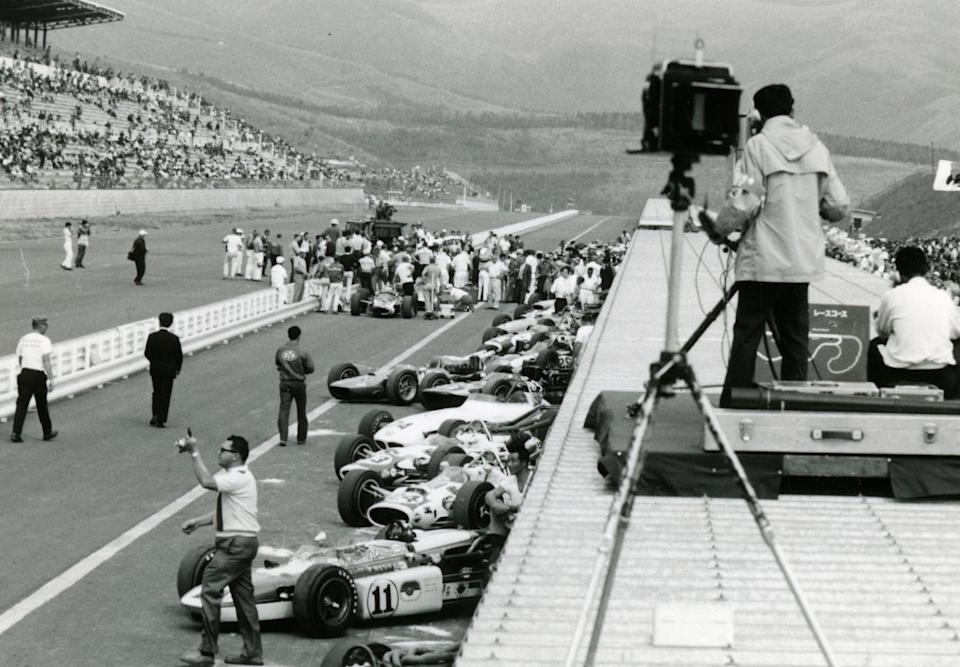
The next year, Japan’s Minoru Kawai drove a locally made Toyota to beat Canada’s John Cannon aboard a Ford-made Can-Am car. But entries were sparse, and Fuji’s Can-Am venture was over.
So was any future for the first-turn banking. Subsequent track revisions bypassed it with much slower first turns, as well as a new complex of twisties at the other end of the lap. The original top straight remains in place today, and the facility is still recognizable as Fuji.
But to experience the fearsome Daiichi, visitors must walk some distance beyond today’s first corner to a short, weed-grown remnant of the old banking, preserved as the fading memory of an odd dream.

A car-lover’s community for ultimate access & unrivaled experiences.JOIN NOW Hearst Owned
You Might Also Like
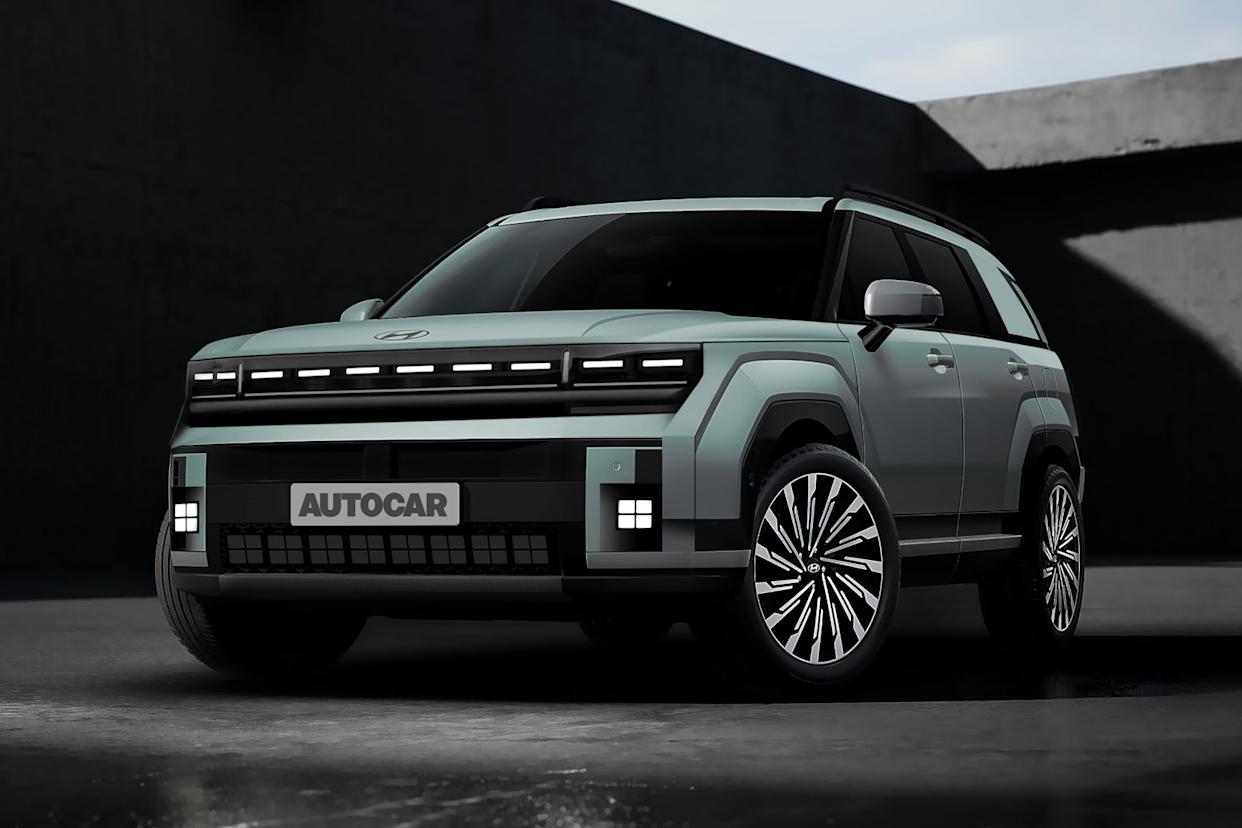
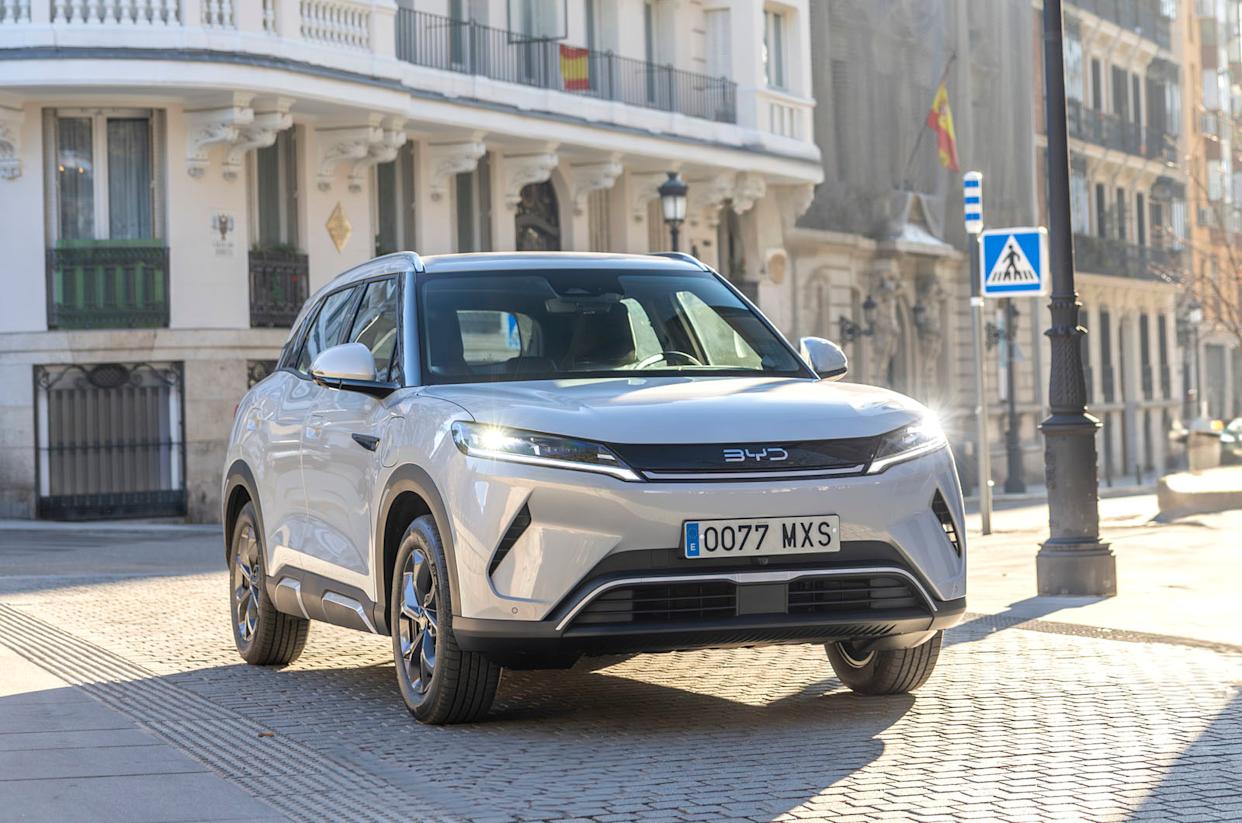
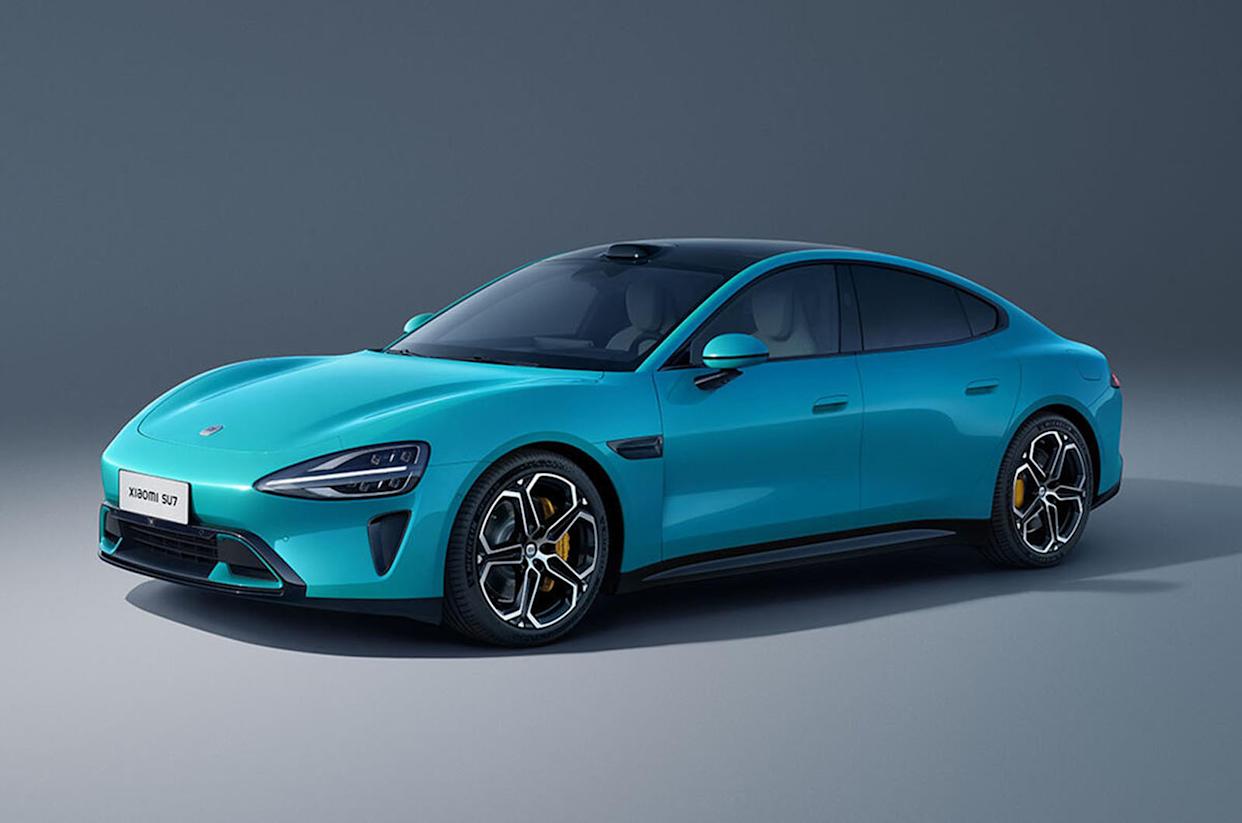

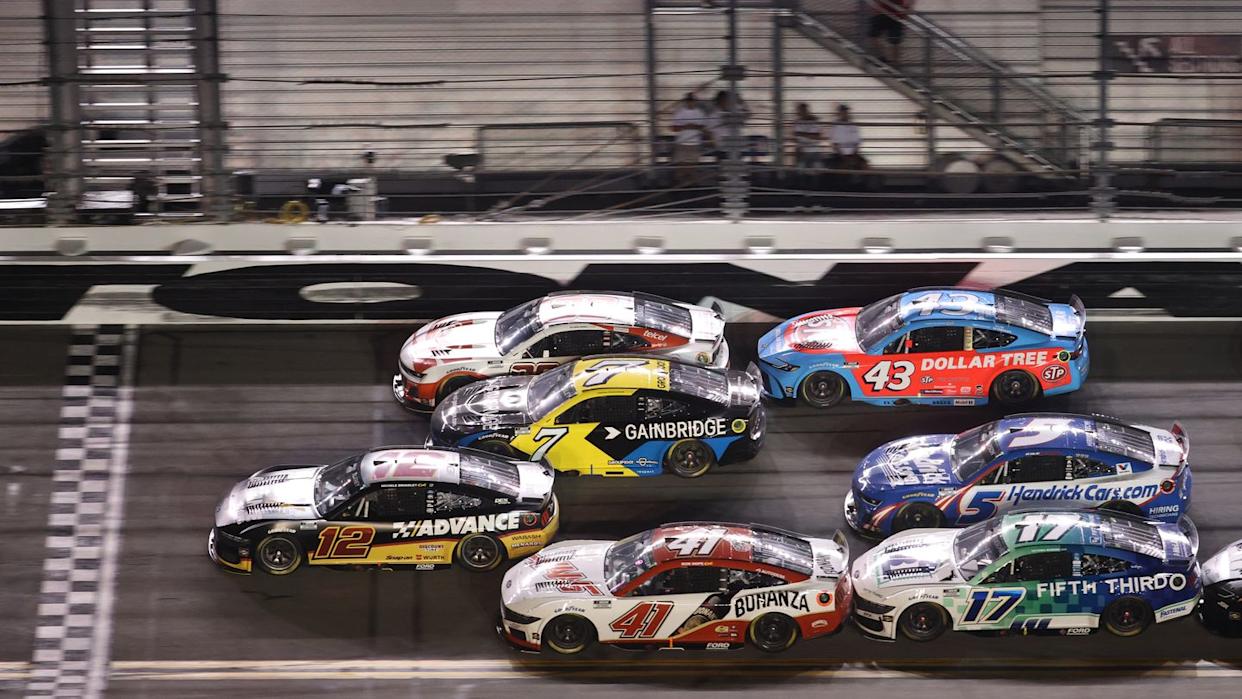
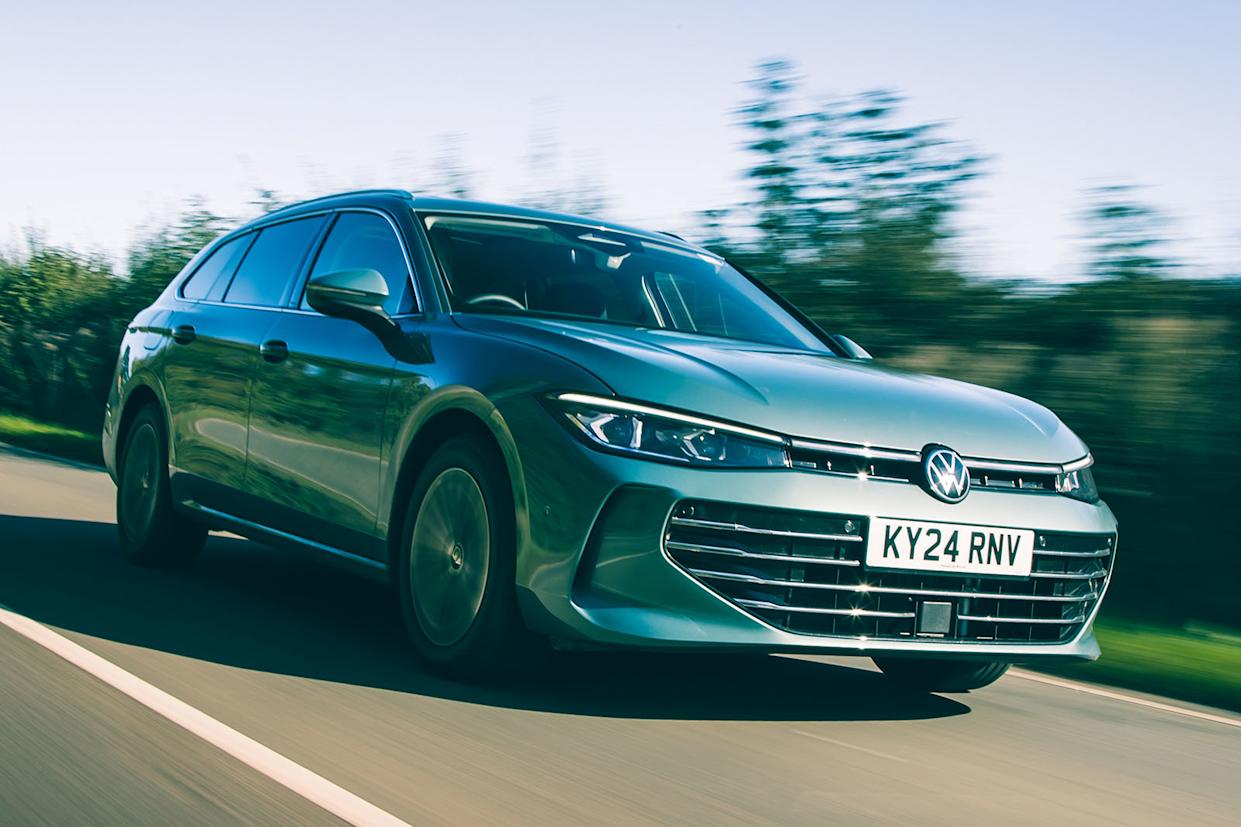
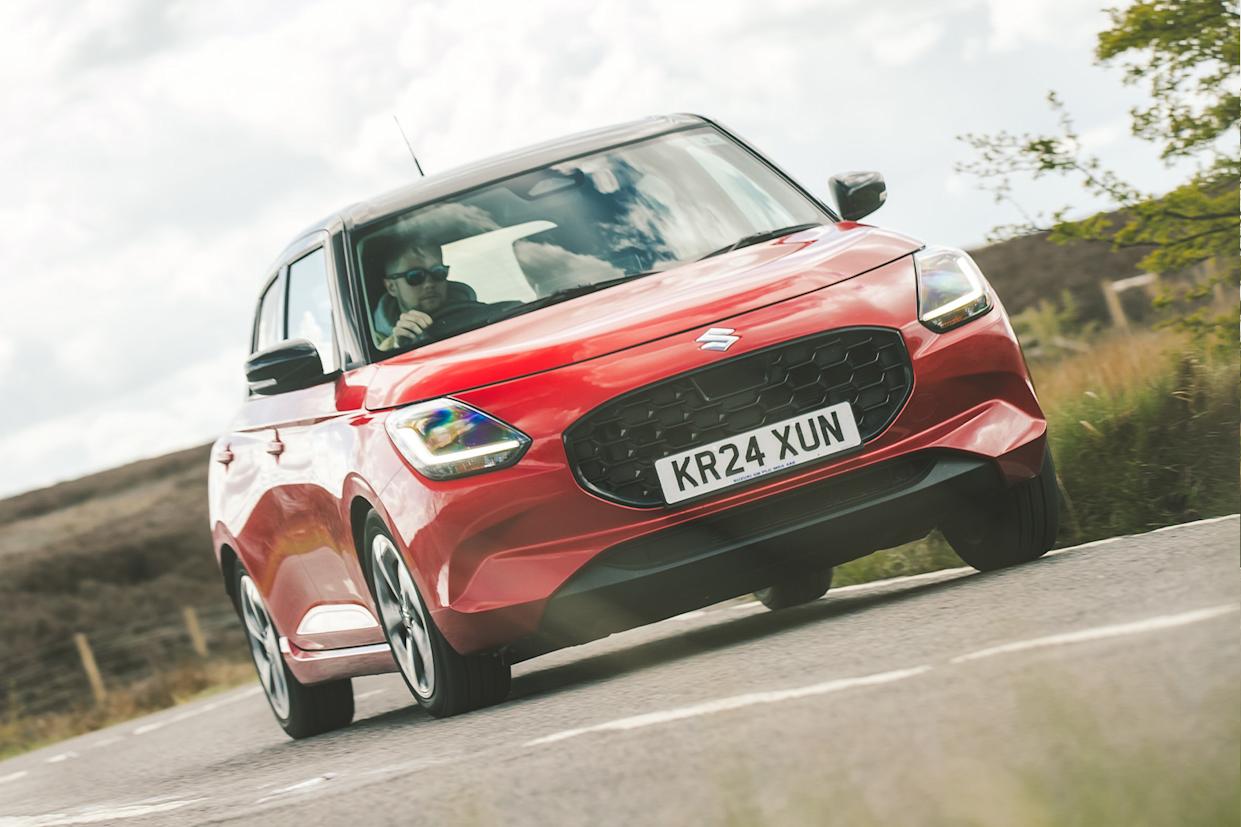
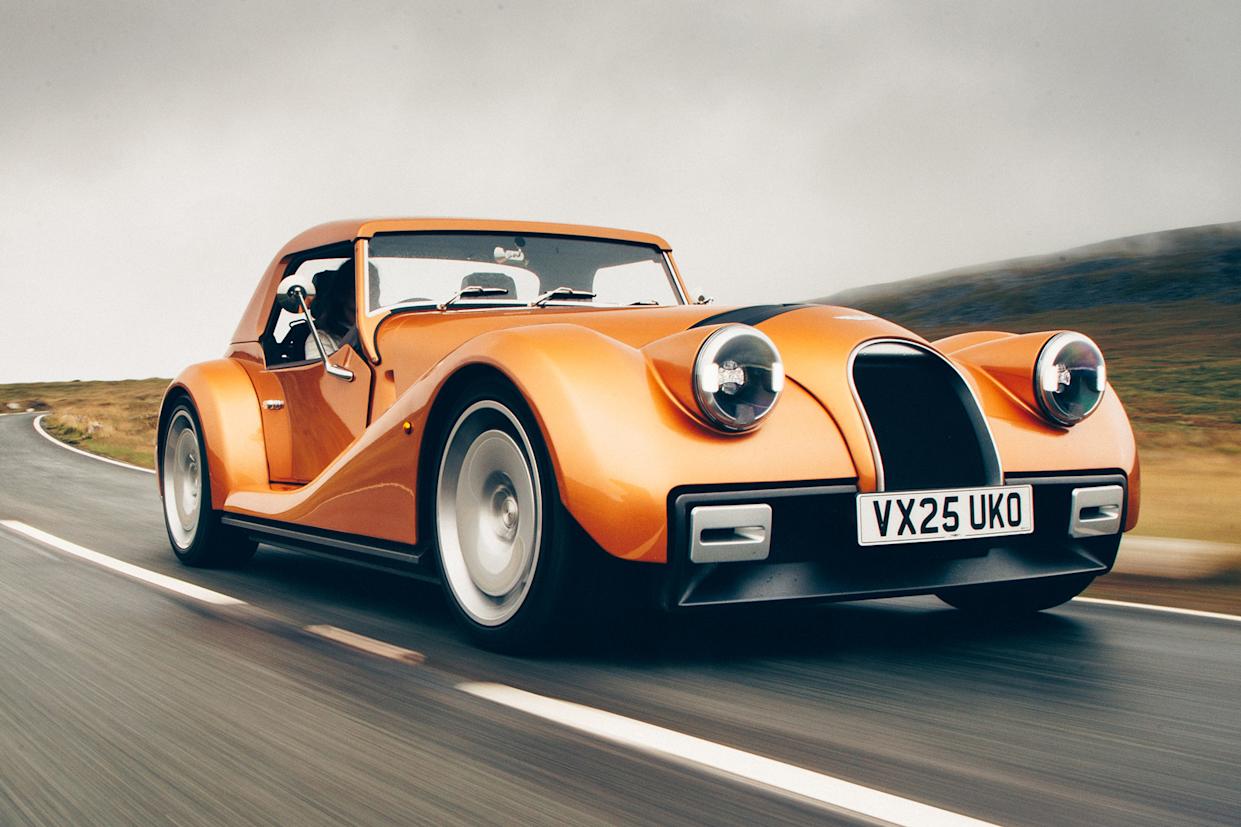
Comments